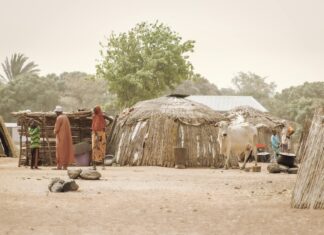A day after the United States surpassed China as the country with the most known cases of the coronavirus, with more than 85,000, New York Governor, Andrew Cuomo shared another grim statistic: 100 patients died in one day in New York.
The state’s total number of coronavirus deaths now stands at more than 430 — with 365 deaths in New York City as of Friday evening. The number of people hospitalised for the virus in New York also jumped 40 percent yesterday, Cuomo said.
For the past two days, New Yorkers have been dying at a rate of one every 17 minutes, according to the latest grim citywide statistics.
On both Thursday and Friday, another 84 people died in the city from the coronavirus, as the number of positive cases and of those who are critically ill also climbed. The COVID-19 death toll in the city was 450 as of Friday evening, up from 366 reported fatalities in the morning.
Total citywide coronavirus cases rose to 26,697, up 4.4 percent from the 25,573 reported in the morning.
The coronavirus has hospitalized 5,250 people in New York City and the number of patients requiring ICU treatment rose significantly over the last 24 hours. A total of 1,175 patients are in ICUs, a 37.6 percent rise from the 850 that needed such care as of Thursday evening.
Queens continues to lead the five boroughs with 8,529 confirmed cases, followed by Brooklyn with 7,091, The Bronx with 4,880, Manhattan with 4,627 and Staten Island with 1,534.
The news came in stark contrast to the optimistic briefing the governor gave on Wednesday, in which he pointed to the state’s slowing rate of hospitalisations.
The governor emphasised that the numbers on any single day did not necessarily capture the damage being caused by the virus.
If the rate of growth in coronavirus cases in the New York metro area continues, it will suffer a more severe outbreak than those experienced in Wuhan, China, or the Lombardy region of Italy.
There is no guarantee, of course, that current trends will continue. What has happened to this point cannot be used to predict what will happen next. It is possible that social distancing will soon slow or arrest the growth of cases.
But what can be said is that the New York metro area has had less success in flattening the curve, at this point in its outbreak, than Wuhan or the Lombardy region did at the same point in theirs. And some other American metropolitan areas appear to be on a similar path.
Scientists warned that the United States someday would become the country hardest hit by the coronavirus pandemic. That moment eventually arrived.
In the United States, at least 81,321 people are known to have been infected with the coronavirus, including more than 1,000 deaths — more cases than China, Italy or any other country has seen, according to data gathered by The New York Times.
With 330 million residents, the United States is the world’s third most populous nation, meaning it provides a vast pool of people who can potentially get Covid-19, the disease caused by the virus.
A series of missteps and lost opportunities dogged the nation’s response.
Among them: a failure to take the pandemic seriously even as it engulfed China, a deeply flawed effort to provide broad testing for the virus that left the country blind to the extent of the crisis, and a dire shortage of masks and protective gear to protect doctors and nurses on the front lines, as well as ventilators to keep the critically ill alive.
The United States, which should have been ready, was not. This country has an unsurpassed medical system supported by trillions of dollars from insurers, Medicare and Medicaid. Armies of doctors’ transplant hearts and cure cancer.
The public health system, limping along on local tax receipts, kills mosquitoes and traces the contacts of people with sexually transmitted diseases. It has been outmatched by the pandemic.
There was no Pentagon ready to fight the war on this pandemic, no wartime draft law. There was eventually a White House Coronavirus Task Force, but it has been led by politicians, not medical experts.
The Centers for Disease Control and Prevention is one of the great disease-detective agencies in the world, and its doctors have contributed mightily in skirmishes against Ebola, Zika and any number of other health threats.
But the agency retreated into silence, its director, Dr. Robert Redfield, almost invisible — humbled by a fiasco in the failure to produce basic diagnostic testing.
Now at least 160 million Americans have been ordered to stay home in states from California to New York. Schools are closed, often along with bars, restaurants and many other businesses. Hospitals are coping with soaring numbers of patients in New York City, even as supplies of essential protective gear and equipment dwindle.
Other hospitals, other communities fear what may be coming.
The world will be a different place when the pandemic is over. India may surpass the United States as the country with the most deaths. Like the United States, it, too, is a vast democracy with deep internal divisions. But its population, 1.3 billion, is far larger, and its people are crowded even more tightly into megacities.
China could still stumble into a new round of contagion as its economy restarts, and be forced to do it all again.
In the meantime, with the virus loose in the streets while millions of Americans huddle indoors, when will it be safe to come out and go back to work?










